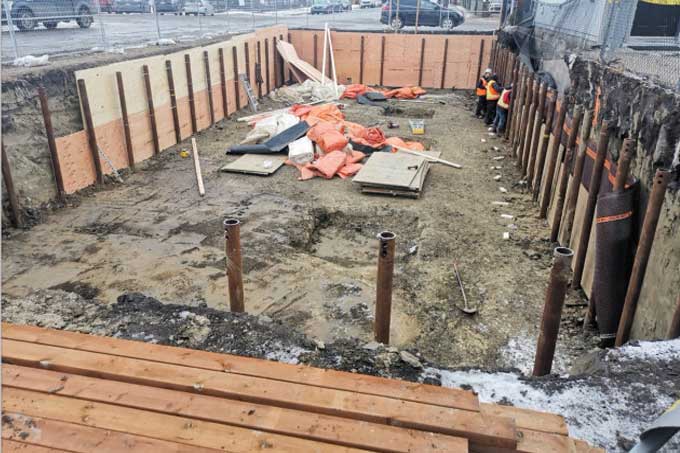
Shoring in Construction: Types and Applications

When it comes to construction, structure support is essential. It is not in the interest of a good engineer or architect to see their construction collapse. For that reason, shoring is needed to hold the structure up so it won't collapse. At the beginning of construction, the most common method of shoring is excavation.
A deep excavation is supported by shoring to prevent soil overturns that can cause damage. Based on soil type, support shoring usually supports excavations 1.20 meters deep. Here, shoring is just used to retain the soil during excavation, unlike any other construction type.
Following is a brief description of the 5 types of shoring and the full guide that goes along with them.
I or H Beams Shoring
In a construction site, H beams or I beams are the most commonly used shoring type. The ground is being driven with prefabricated steel in I or H sections. Vibration of the section into the soil rather than pre-drilling the soil before installing the beam is possible due to the soil's condition. As part of shoring walls construction, precast concrete panels are installed between driven steel beams.
Deep Excavation Using I or H Beam
Different types of excavation ranges can support I or H beam shoring. Depending on the structural design, 1.2 to 5 meters is good for deep excavation or at least one basement.
If the structural designer calculates the sustain surcharge load along with the outside perimeter of the building, they can go 5 meters or more on their design.
Secant Pile Shoring
An intersected pair of piles creates Secant Pile Shoring. One type is the primary pipe, also known as the non-reinforced pipe, and the other is the secondary pipe, also known as the reinforced pipe.
To keep the alignment in place during deep excavation, a guide beam is created prior to installation.
When the concrete has not been set properly, the temporary casing extracts after casting the primary pile. A heavy casing is then driven through the fresh concrete adjacent to the piles where the piles are intervening.
A secondary or reinforced pipe is then drilled immediately. In addition to the structural pours, the secondary pipe steel cage forms a continuous wall. As a result of the existing structure being too close to the excavation, Secant pipes can be used perfectly in an open excavation.
Contiguous Pile Shoring
The Tangent Pile Shoring, or Contiguous Pile Shoring, has a shape where the faces of the files are almost on the same line and tangent to each other. There is no indication of water or there is only a minimal amount of pressure. The clay soil is ideal for shoring, since it can retain dry rough material and fill. A rough soil may be water-bearing, but the water will seep through the pile gaps. Grouting these gaps can be used to create a watertight retaining wall. Contiguous Pile Shoring is detrimental to high groundwater without dewatering works.
Prior to the installation, Contiguous Pile Shoring was the same as Secant Piles. It is necessary to create a guide beam in order to install the contiguous wall.
Sheet Piles
In soil excavation, sheet pilings are used to hold the soil in place. This type of shorting isolates excavation from water bodies like ponds, creeks, and sea sides. These sheet piles are used on construction sites in ports and harbors. Vibro hammers are used to drive prefabricated sections of U or Z Steel into the ground, just like soldier piles.
A full wall is formed by connecting these sheet files. Depending on the length of the short sheet piles, the ground depth can be increased by welding them together.
Diaphragm Walls
When excavations are deep, diaphragm walls may be required. Reinforced concrete is designed primarily to withstand loads.
To learn more, watch the following video tutorial.
Video Source: Amazing Engineering Study
In addition to temporary retaining walls, these types of shoring can also be used for permanent retaining walls. When excavating deep basements or tunnels, it can be the best choice.


